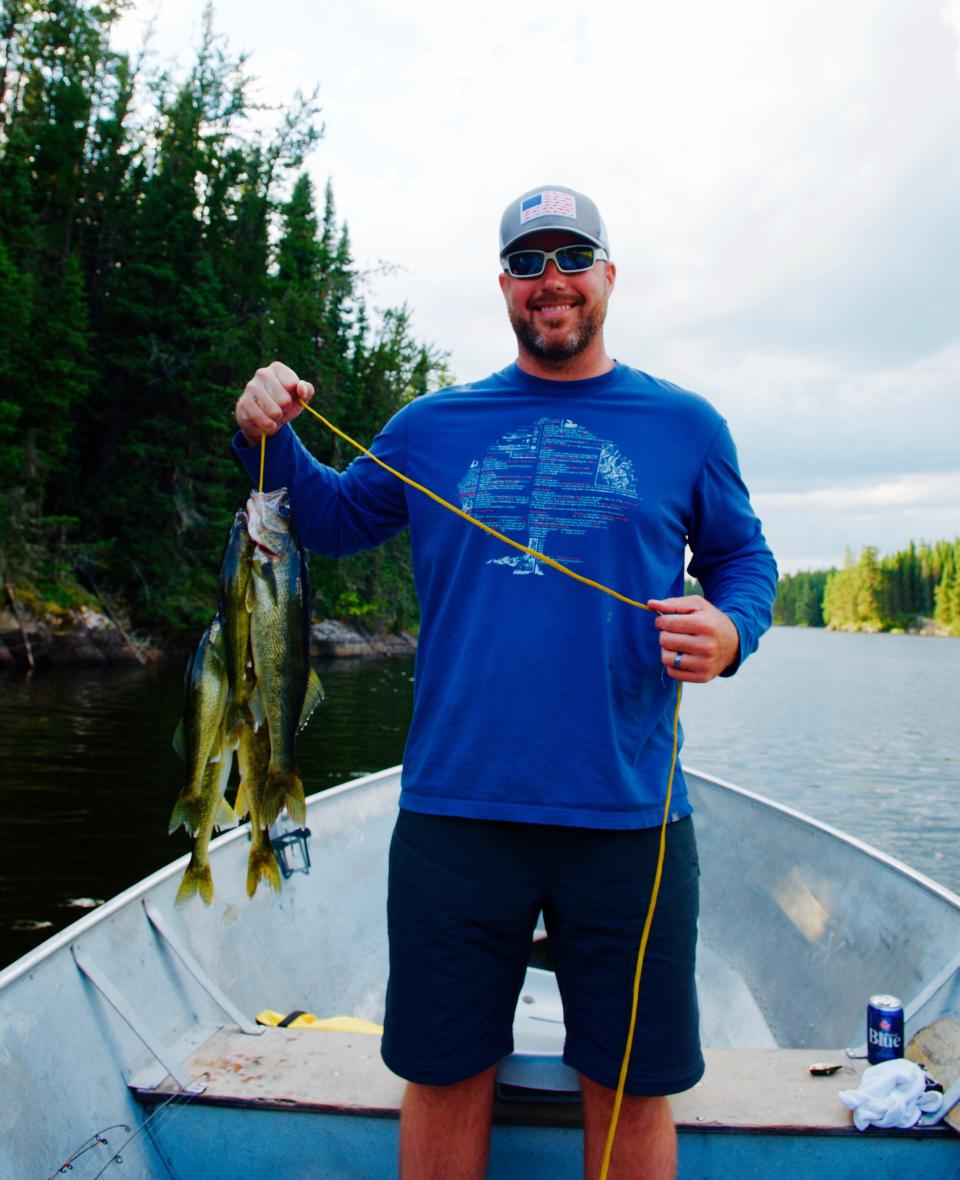Driftwood Outdoors: Early fall is a dream season for hunters, anglers

Summer has slipped into fall, delivering a host of hunting seasons while fishing heats up across the board.
Predator fish of the north, like walleye, musky and northern pike, are aggressively feeding in preparation for winter. Down south, bass fishermen are experiencing some of the hottest action of the year. Pan fishermen keep busy putting filets in the freezer and catfish hunters are prowling the big waters for river monsters.
Hunting is ramping up to full swing. Archery seasons for deer are opening in Midwest. You can go hunting in the morning for deer and spend the midday busting through the brush for grouse. Small game and fall turkey opens in some states. Ducks return to the marshes. Hunters take an early crack at knocking down a few.
With so much outdoor opportunity available across the Midwest, the hardest decision one can face is what to fish or hunt for on any given day. Here are a few suggestions.
Illinois: Banner Marsh musky
Banner Marsh State Fish and Wildlife Area is home to three musky lakes: Johnson, Shovel and Wheel. Johnson is the largest at 600 acres. The old strip pits lie along the Illinois River near the town of Banner. Muskies have been stocked in the Banner Marsh lakes regularly for decades.
These lakes are marshy. Meaning they are full of weeds, and they’re narrow and chopped up. So there are lots of places for predators, like musky, to hide. Throwing big bucktails or giant swim baits across weedy points early in the day is a favorite tactic. This is a great destination for kayak angling.
Indiana: Maxinkuckee walleye
Lake Maxinkuckee in Culver is stocked with walleye. At 1,884 acres, it is the second-largest natural lake in Indiana. In a state without many knockout walleye fishing options, Maxinkuckee can hold its own when anglers know what they’re doing.
This month, walleye will begin to move up shallow to feed, especially at night. Throwing Shad Raps, crank baits or stick baits along rocky shores close to a drop-off should be productive. Maxinkuckee isn’t where you come looking for lunker walleye, but a couple of 16-inchers for the dinner table is possible.
Michigan: Archery deer
Michigan is steeped in deer hunting lore. Fred Bear and his compatriots put the state front and center. When they were bowhunting in the 1950s and '60s, they were lucky to see a buck. Today, Michigan is home to around two million deer. Populations continue to climb as fewer hunters take to the woods.
Pigeon River Country State Forest near Gaylord offers over 100,000 acres open to hunting. You could combine deer hunting in the area with trout fishing and grouse hunting.
Minnesota: Grouse
An early season ruffed grouse hunt on a frosty morning in the Northwoods is a real treat. Leaves are still on the trees, so hunting is tougher than later in the season. But the birds are fresh and the scenery is outstanding.
Minnesota has numerous special grouse areas around the state. There are excellent walk-in areas north of Duluth known for producing high-quality grouse hunts. Traveling further north to the Lake of the Woods region to hunt the Beltrami Island State Forest is another trip worth making. Plan on busting brush over many miles. Concentrate on new growth areas. All the walking becomes worth it when you hear the unmistakable beating of their wings as they take flight.
North Dakota: Jamestown Reservoir walleye
The prairie lakes of North Dakota offer excellent walleye fishing. Jamestown Reservoir is a long and narrow body of water covering just over 2,000 acres. It’s located just north of Jamestown. Try trolling stick baits along shallow water drop-offs early and late in the day.
Most of the walleye fishing takes place from a boat, but there is a public fishing pier offering anglers a comfortable place to fish from shore. Stop by the Pioneer Bait Shop on Fifth Street to catch up on all the angling news. Walleye must be 14 inches long to keep.
Ohio: Squirrels
When you get down in the southeast portion of Ohio, you can find yourself in some rough country. These hills are on the edge of Appalachia where squirrel hunting is a longstanding tradition. The Wayne National Forest comprises 240,101 acres and has plenty of squirrels to keep any bushytail hunter happy.
Through September, while the leaves are on the trees, slowly make your way down old logging roads while looking into the treetops. Stop often, while remaining still and quiet. Squirrels will often give their locations away by chattering. Hunters have a daily bag limit of six.
Wisconsin: Onalaska bluegills
Sometimes you need to keep it simple, and a day of good bluegill fishing is just that. Bluegill fishing does not necessitate the need of fancy equipment. Nothing has caught more bluegill than a worm under a bobber. Keep it simple.
Lake Onalaska is loaded with nice bluegill. The 8,391-acre lake in La Crosse County has bluegill structure all around. Fish are close to the shore around visible structure and weeds. Fittingly, there are numerous places to fish along Fisherman’s Road by the airport where you can find bluegills.
See you down the trail.
For more Driftwood Outdoors, check out the podcast on www.driftwoodoutdoors.com or anywhere podcasts are streamed.
This article originally appeared on Columbia Daily Tribune: Driftwood Outdoors: Early fall is a dream season for hunters, anglers

